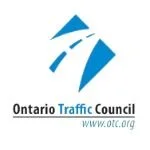OTC Statement Social Media Release 3:30 p.m. September 26,2025
The Ontario Traffic Council (OTC) remains strong in our support for the use of automated speed enforcement as a road safety solution to curb speeding where our children, seniors and other individuals walking, cycling, and rolling are at most risk of collisions with motor vehicles. Banning ASE takes one of the resources away that would otherwise have been evaluated by transportation engineers, technologists, and road safety professionals as an evidence-based, potentially life-saving solution to speeding.
If the Governments own regulation doesn’t stand up to its own criticism, the easy fix is to change the regulation. The Ontario Traffic Council alongside our municipal members and through our partnership and collaboration with the MTO helped develop the original framework for ASE. As experts in ASE, we have reached out to Premier Ford and Minister Sarkaria to offer our expertise in evaluating regulation changes to resolve the ASE challenges the Premier points to, which in turn would support the responsible continuation of this effective road safety tool within Ontario communities.
The OTC’s aseontario.com website provides a “Myths” section which debunks the misinformation that critics of ASE have wrong.
OTC Statement Social Media Release 9:00 a.m. September 25, 2025
To the millions of responsible Ontario drivers who drive the speed limit in our School and Community Safety Zones – protecting our children, seniors and individuals walking, riding, or rolling – Thank you!
The Ontario Traffic Council would like to present the solutions we have recently developed to address fairness, consistency, and public transparency with Ontario’s Automated Speed Camera (ASE) programs.
The OTC has updated aseontario.com, where all Ontarians can find information on ASE, its benefits, and myths.
The OTC Guidelines for municipalities providing information and best practices for ASE, originally published in 2019, is being updated to address government concerns and provide stronger guidance around community safety zones, compliance with legislation, provincial agreements, and re-investing net revenues into road safety programs.
The OTC is going one step further in creating a member-based provincial ASE Steering Committee where municipalities with council-approved ASE programs would commit to following a consistent threshold speed, re-investment of ASE revenues into road safety programs, data and research-based evaluation of other road safety solutions, and adherence to all the requirements of the province’s ASE.
Ontario celebrates having the safest roads in North America. The Ontario Traffic Council is confident, working with our municipal members and through our collaborative partnership with the MTO on continuous improvement of road safety programs and initiatives, such as ASE, we can continue to maintain Ontario’s top spot for safe roads.
Automated Speed Enforcement is one of the most successful evidence-based road safety solutions Ontario municipalities have available. It has proven to curb speeding in school and community safety zones within the very places evidence shows our children, our seniors, and all individuals walking, riding, and rolling are at most risk to motor vehicle collisions.
Let’s stop glorifying the vandals cutting down speed cameras. Let’s stop victimizing drivers who disobey driving laws. Instead, let’s focus on protecting lives and work to continue Ontario’s roads ranking as the safest in North America. Let’s not move backward in road safety. Instead, let’s continue to operate automated speed enforcement within our communities across Ontario.
Spotlight on ASE
Automated Speed Enforcement (ASE), sometimes referred to as Community Safety Cameras, is an automated system that uses a camera and a speed measurement device to help enforce speed limits in school zones and community safety zones – you know, those places where kids and people of all ages tend to walk, run, bike, roll and play!
In 2017, Ontario authorized the use of ASE in municipalities to address ongoing issues with speeding in school zones and community safety zones. With municipalities collecting local data that indicates where speed is a factor, this data will now be used as evidence to pinpoint where ASE can be implemented in their communities to help make a difference.
A driver will be made aware of Automated Speed Enforcement through a “Municipal Speed Camera Coming Soon” warning sign posted within the ASE zone at least 90 days in advance of ASE being activated, and a “Municipal Speed Camera in Use” sign which complies with ASE regulation will be posted when ASE cameras are in use.
A municipal council has the authority under the Highway Traffic Act to designate through by-law a part of a road under its jurisdiction as a community safety zone if, in the council’s opinion, public safety is of special concern on that part of the roadway.
In other words, a Community Safety Zone is designated to protect road users on a portion of a roadway in proximity to schools, daycare centers, libraries, parks, community centres, seniors homes, etc., and using speed studies and data pertaining to near misses and collisions.
If a vehicle exceeds the posted speed limit in an ASE-enforced area, the ASE system captures an image that is stored and reviewed by a provincial offences officer. The ticket, which contains a digitized copy of the image and an enlargement of the plate portion, is mailed to the registered plate holder. Upon conviction, the only penalty is a fine – no demerit points are applied.
The owner of a vehicle with a driver exceeding the posted speed limit where ASE is active may receive an offence notice within 23 days of the offence. There is no grace period, or maximum number of offence notices to which a driver can speed and not receive an offence notice. If a driver speeds through an ASE zone the vehicle owner may receive an offence notice as many times as the camera system determines the driver is speeding. The cameras may operate 24/7 while the “Municipal Speed Camera in Use” or may be operational within times, dates and months as determined by the municipality in which the camera system operates.
An automated speed camera may operate during school hours, during extended periods where students may be in the proximity of a school, or 24/7 within a School or Community Safety Zone where it has been determined that speeding may be a risk to any road users. ASE is used to change driver behaviour. The premise behind 24/7 use of cameras is that a speeder is a speeder and disobeying the law does not have a time stamp associated with it.
Drivers exceeding a speed limit on Ontario roads are in violation of the Highway Traffic Act and regardless of whether automated speed enforcement or traditional speed enforcement is in place, a motorist or motor vehicle owner is at risk of receiving a penalty for this offence. Remember, speed limits are not guidelines – they are the law. ASE is the reminder we ALL need to slow down to keep our communities safe.




